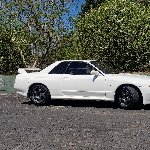R32 Gtr Single Gt35r. Apexi's De-jetro A Good Choice?
Announcements
-
Similar Content
-
Latest Posts
-
Thanks. So crank is the same, stroke and everything is the same? Im getting crank collar installed anyway I have heard this internet myth as well, but ive had a few unopened Neos as well and no long nose crank. Supposedly it may have been a series 2 thing? The ones I had were from series 1’s. No idea haha
-
By Dose Pipe Sutututu · Posted
Both NEOs I bought had short oil pump drives on them, even though internet legend has it they introduced longer collars on them. However, it's true NEO motors used N1 sized oil pump gears and not the same ones found in the R33 RB25 motor. Block wise, NEO has the front head VCT drained blocked off, but you can easily remove that. -
Its definitely nice to still see skyline dedicated events happening in the car scene but I do believe its somewhat less populated as the cars become much rarer. The first event I went to in 2022 had a turnout of what seemed like 40ish skylines whereas the recent one I attended seemed to be a quieter turnout of around 20 cars.
-
Definitely an ongoing project as they all are, unfortunately it's hard to do a lot of the longer jobs on it as I daily it to work every day which means no leaving it on jackstands in the garage for eons. It also adds its own challenges of old stuff constantly breaking from getting used more than usual which I have sadly come to find multiple times in this short period of ownership haha
-
Yeah was my first "modification" the day it arrived from Adelaide. Had the set of them sitting around from my S15 in 2020 and fate would have it that I finally end up in the right car for them 😋
-







Recommended Posts
Create an account or sign in to comment
You need to be a member in order to leave a comment
Create an account
Sign up for a new account in our community. It's easy!
Register a new accountSign in
Already have an account? Sign in here.
Sign In Now